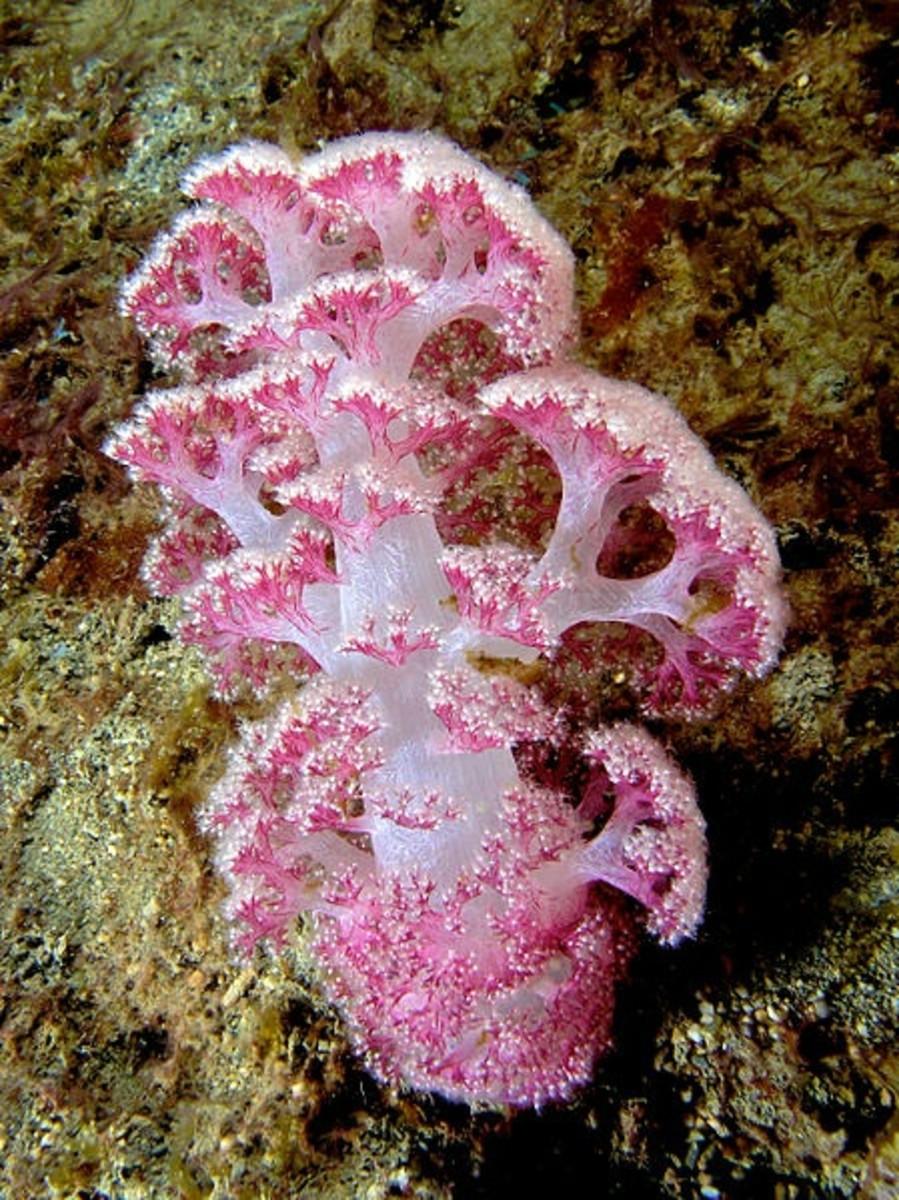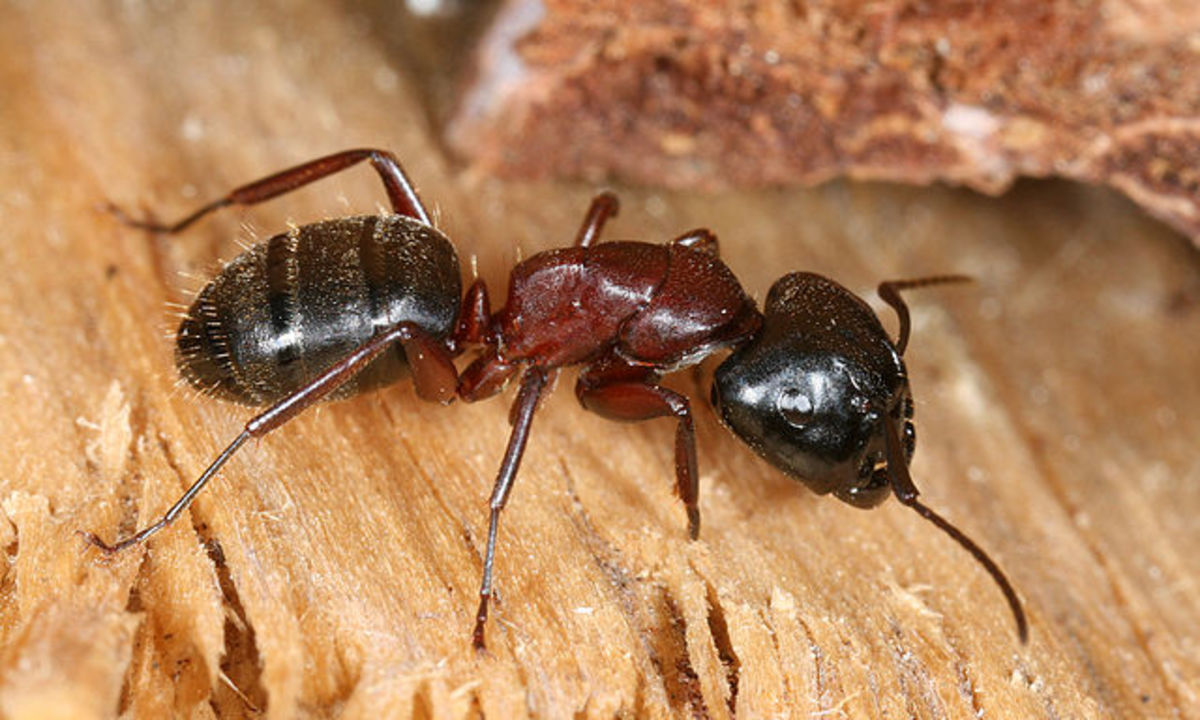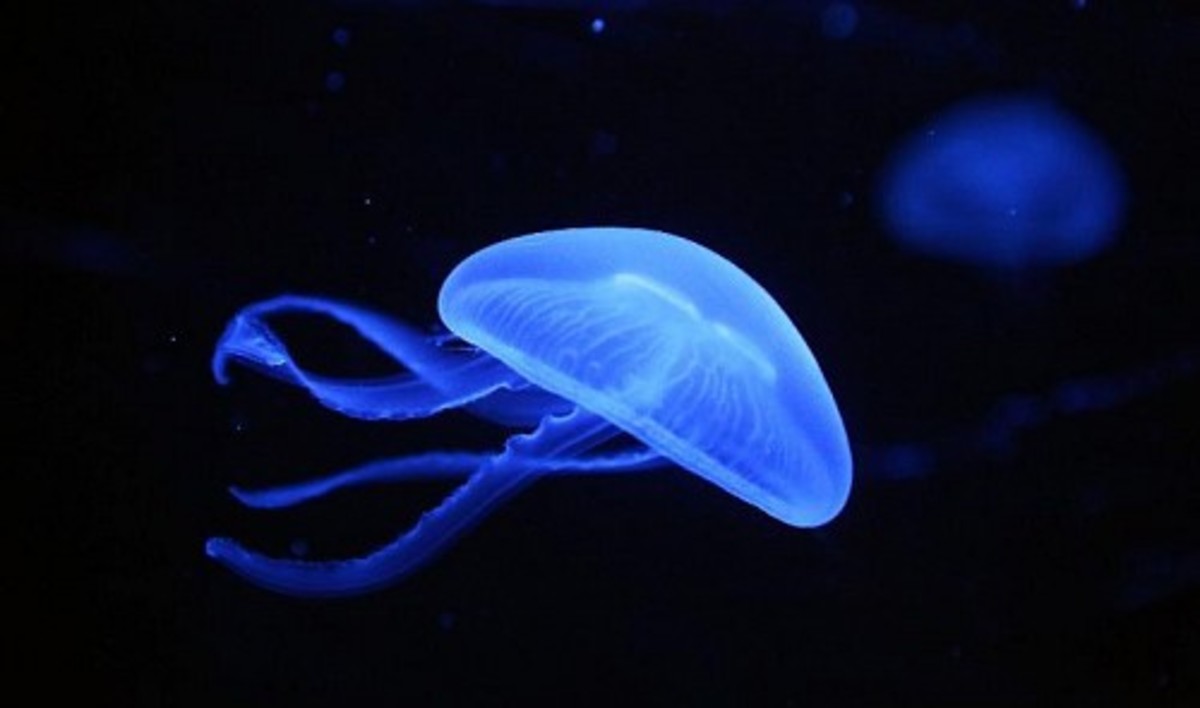Glowing Animals
Glowing animals can are produced through modifications to their genotype, specifically by the addition of a gene that produces fluorescent chemicals in the skin. The glow is often brightest where skin builds up such as on the palm of a monkey's hand or snout of a pig.
This type of research is often conducted to test methods of inserting genes into organisms and to make it easy to see whether the new gene is passed to the next generation. The glowing properties of the gene (typically from a species of luminescent jellyfish) are convenient and easily visible. As a result the glowing gene has showed up all over the place including bacteria, all sorts of animals, and even onions or bacteria.
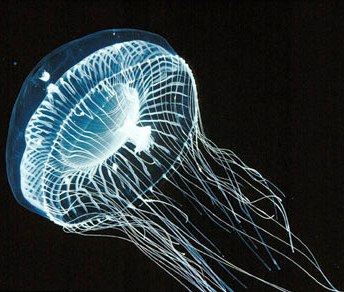
Glow Gene
Jellyfish
The gene used to created glowing cells, bacteria and animals is one that produces green fluorescent protein (or GFP) or occasionally red flourescent protein (RFP). Only one species of jellyfish, the crystal jellyfish a.k.a. Aequorea victoria, produces this protein. The use of this gene as a visible marker in genetic researrch led to the scientists Martin Chalfie, Osamu Shimomura and Roger Tsien being awarded a Nobel Prize for chemistry.
Cats
In 2007 South Koreian researchers from the Gyeongsang National University developed cats that glowed with a slightly less typical red hue (Red Flourescent protein).
The Audubon Nature Institute in New Orleans also developed glowing felines in 2008. The first example was an orange tabby nicknamed "Mr Green Genes".
A later 2011 studyused the gene as a marker for a genotype of use in HIV research.
Dog
2009 saw the announcement fo the first glowing dog, a beagle.
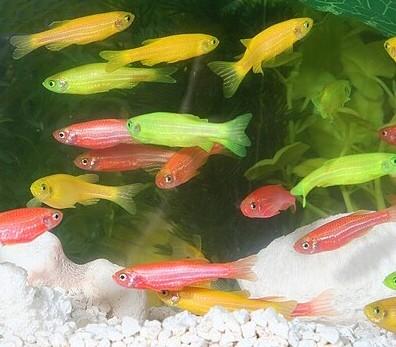
Fish
Glofish
Glofish (see right) come in red, orange and green varieties. They are true-breeding lines of genetically modified zebrafish. The gene in this case is derived from a sea anemone.
These glowing fish were first developed to help scientists study water pollution but they are now sold in the pet trade. In fact financial support for the research was partly provide by the pet trade who saw the potential profit in producing glowing pet fish.
There sale was initially widely protested but Glofosh are now found widely in pets stores and can also be bred by amateur aquarists.
Monkeys
One of the more recent species to be used to test the insertion of the glowing gene is the marmoset. The mutation has been shown to breed true. A similar gene insertion into a rhesus (2001) did not produce visible results.
Rabbit
Developed for research purposes the glowing rabbit was incorporated into modern art by French artist Eduardo Kac (2000). The rabbit, named Alba, was probably one of the first cases of a living transgenic animal being part of a fine art project. The project was ultimately halted by animal rights activists. Kac is now an Assistant Professor of Art and Technology at the School of the Art Institute of Chicago.
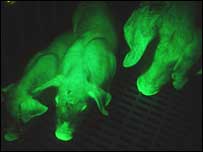
Pigs
Glowing pigs have been developed in several laboratories around the world. The pigs express a genre from a species of jellyfish that causes them to glow.
Examples:
Mice
Because of there short life cycle and well-charted genome, mice are often used to study genetic modification including the insertion of the gene for fluorescence.
Rats
Green fluorescent protein was used to develop the first "knock out" rat. This is a rat in which a specific target gene is made deliberately inactive, In this case rats born to parents that both expressed GFP had this gene knocked out and so they did not fluoresce. The advantage of GFP rats is that the activity of the gene can be easily visual determined without requiring any special tests.
A 2009 project carried out jointly by the Croatian Brain Research Institute and Laval University involved studying reconvery from stroke by developing rat that express an entirely different bioluminescent protein, luciferase, that is naturally produced by fireflies. The luminescence of their brains is sufficiently bright that it can be detected by sensitive camera which track the recover of the rat's brains.
Humans
The jellyfish gene has even been used with a line of human embryonic stem cells.
Other Uses
- The jellyfish gene can also be used as a marker for viral infection.

